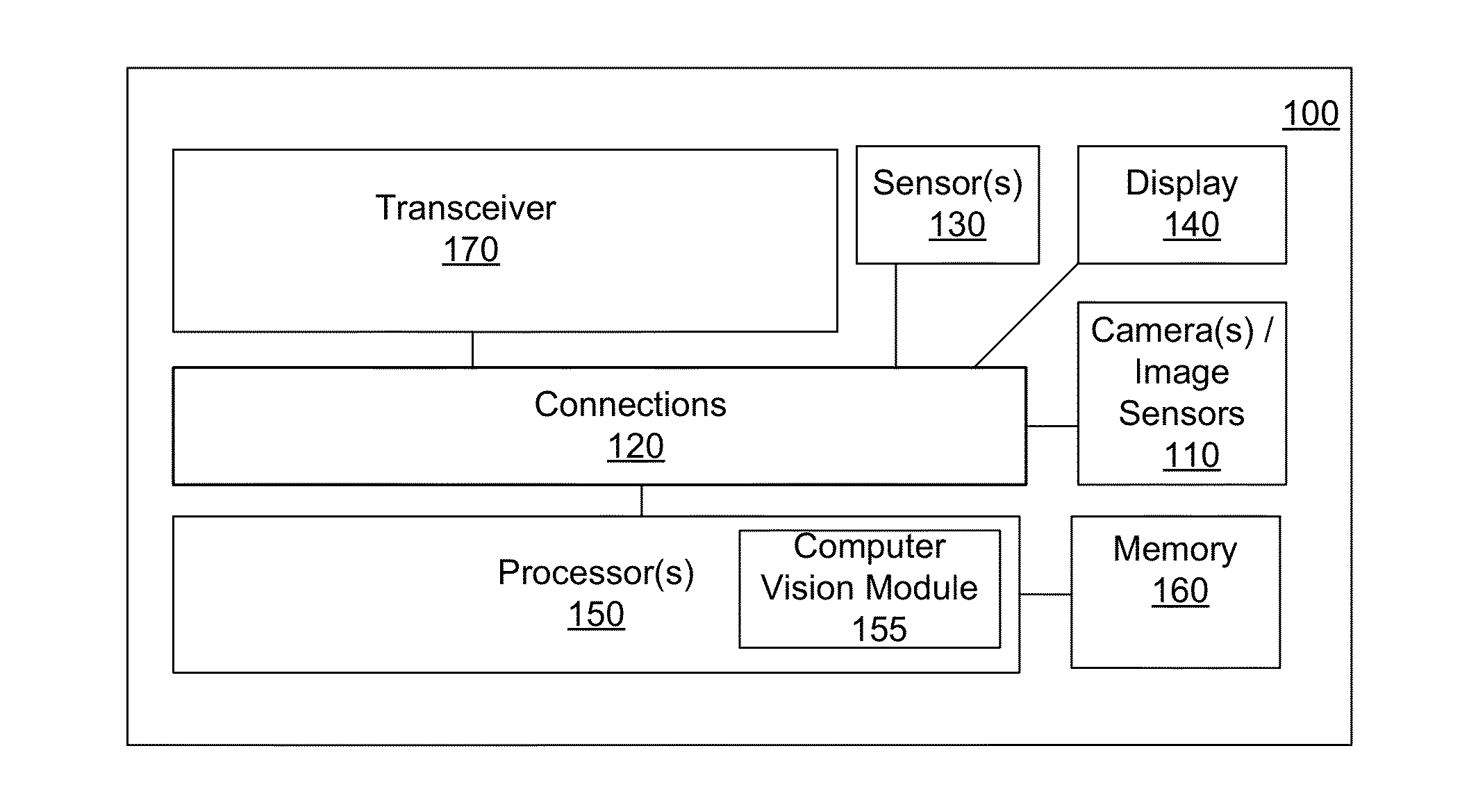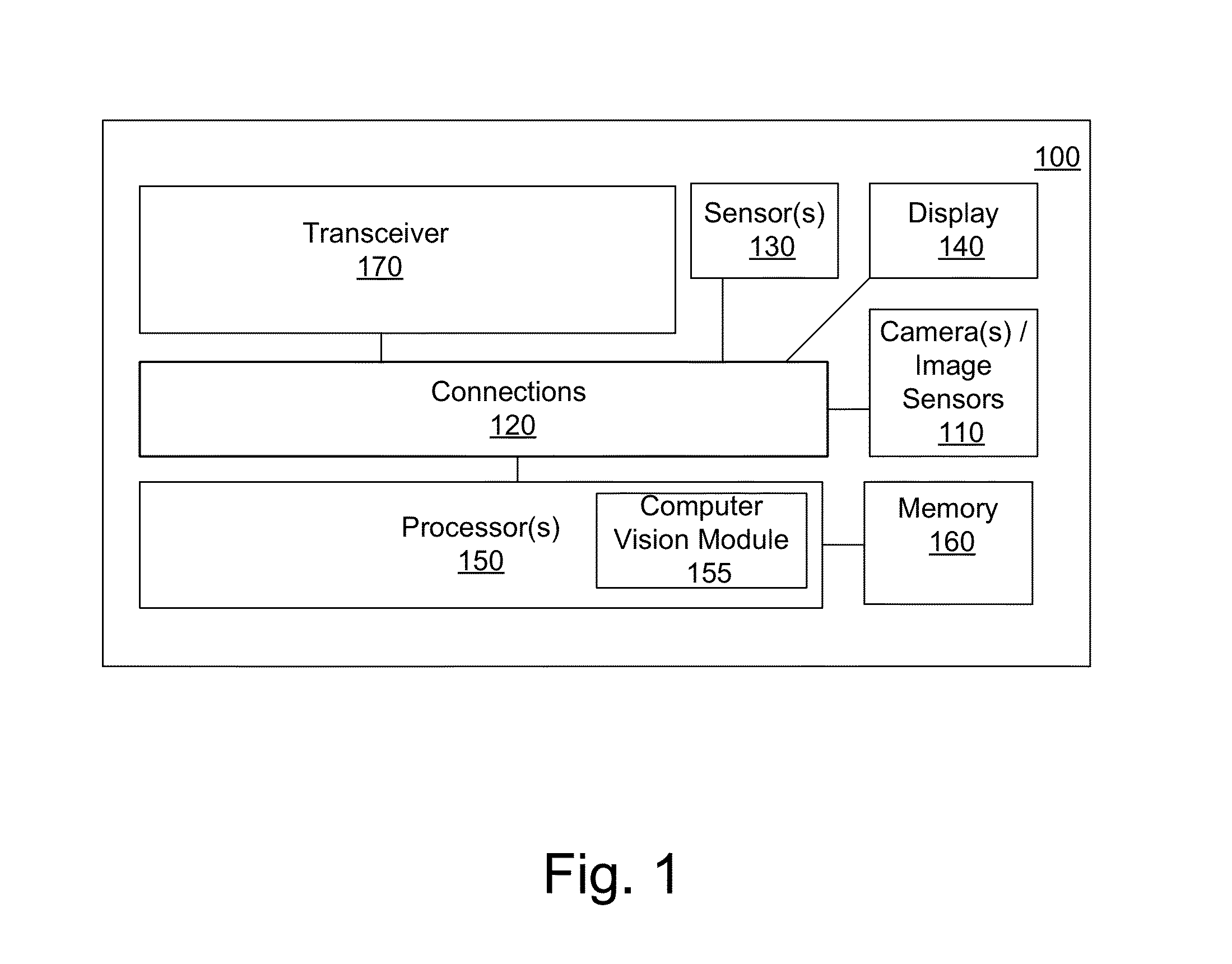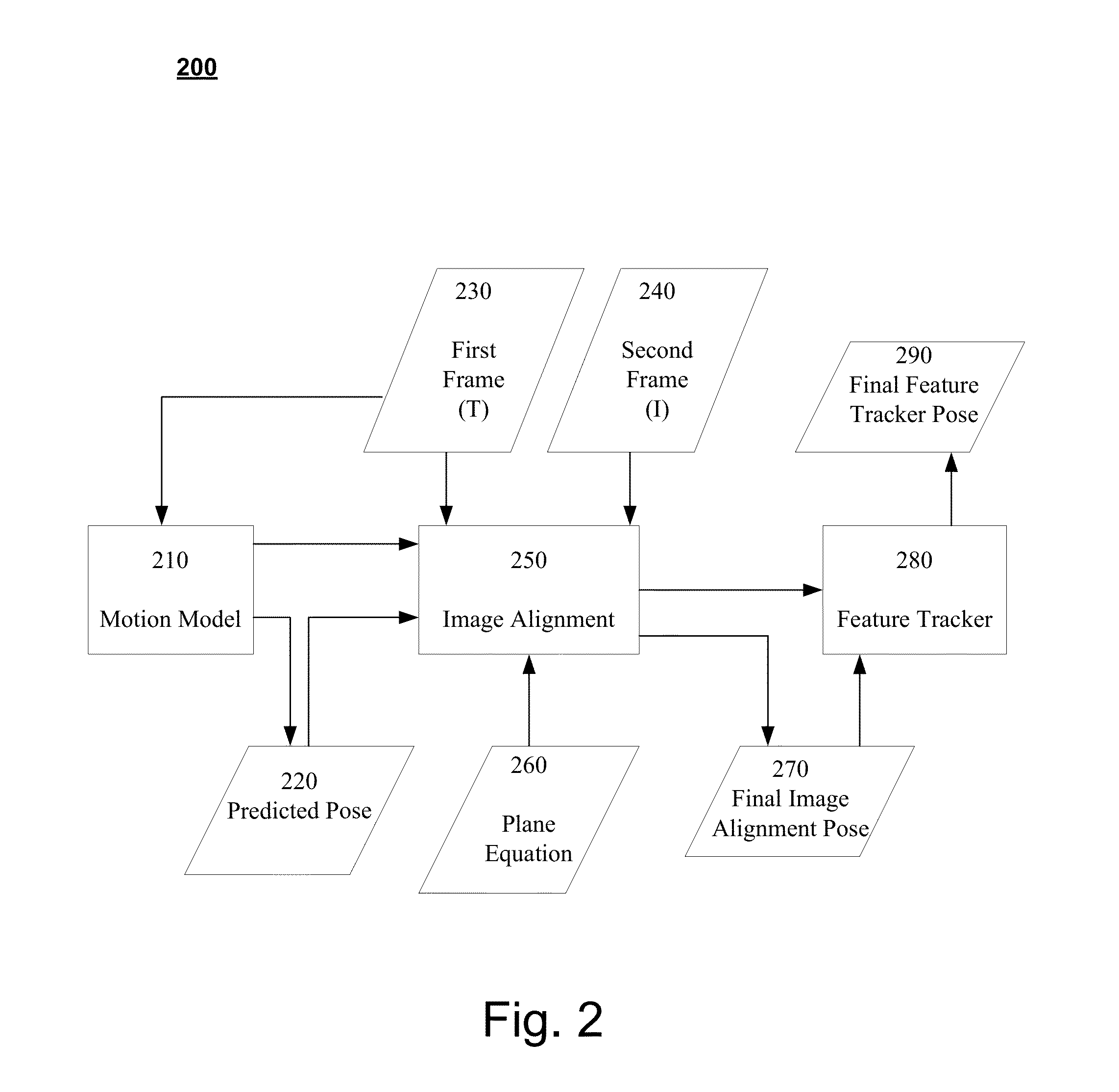Systems and Methods for Feature-Based Tracking
a technology of feature-based tracking and system, applied in the field of system-based tracking, can solve the problems of motion blur, degraded tracking performance, and insufficient feature-based tracking performan
- Summary
- Abstract
- Description
- Claims
- Application Information
AI Technical Summary
Benefits of technology
Problems solved by technology
Method used
Image
Examples
Embodiment Construction
[0020]In feature-based visual tracking, local features are tracked across an image sequence. However, there are several situations where feature based tracking may not perform adequately. Feature-based tracking methods may not reliably estimate camera pose and / or track objects in the presence of motion blur, in case of fast camera acceleration, and / or in case of oblique camera angles. Conventional approaches to reliably track objects have used motion models such as linear motion prediction or double exponential smoothing facilitate tracking. However, such motion models are approximations and may not reliably track objects when the models do not accurately reflect the movement of the tracked object.
[0021]Other conventional approaches have used sensor fusion, where measurements from gyroscopes and accelerometers are used in conjunction with motion prediction to improve tracking reliability. A sensor based approach is limited to devices that possess the requisite sensors. In addition, ...
PUM
 Login to View More
Login to View More Abstract
Description
Claims
Application Information
 Login to View More
Login to View More - R&D
- Intellectual Property
- Life Sciences
- Materials
- Tech Scout
- Unparalleled Data Quality
- Higher Quality Content
- 60% Fewer Hallucinations
Browse by: Latest US Patents, China's latest patents, Technical Efficacy Thesaurus, Application Domain, Technology Topic, Popular Technical Reports.
© 2025 PatSnap. All rights reserved.Legal|Privacy policy|Modern Slavery Act Transparency Statement|Sitemap|About US| Contact US: help@patsnap.com



